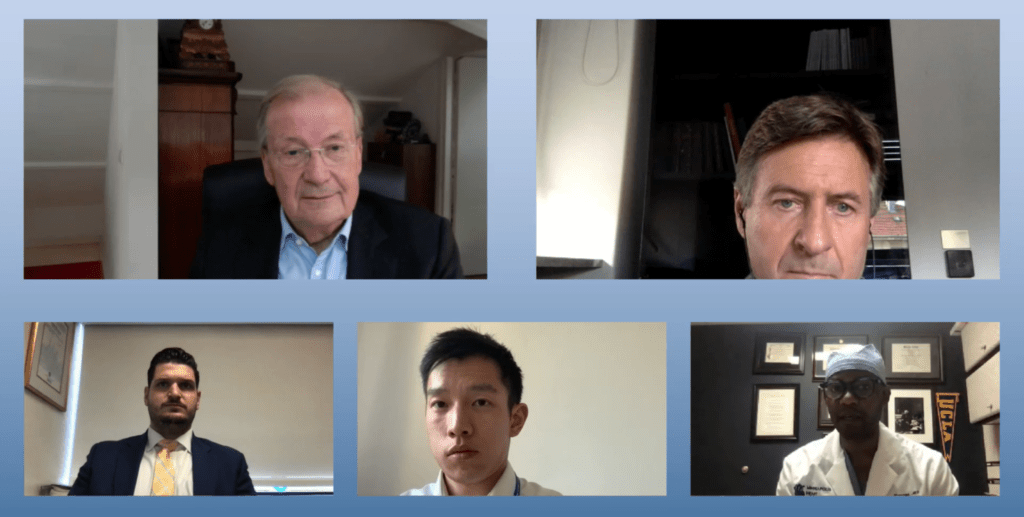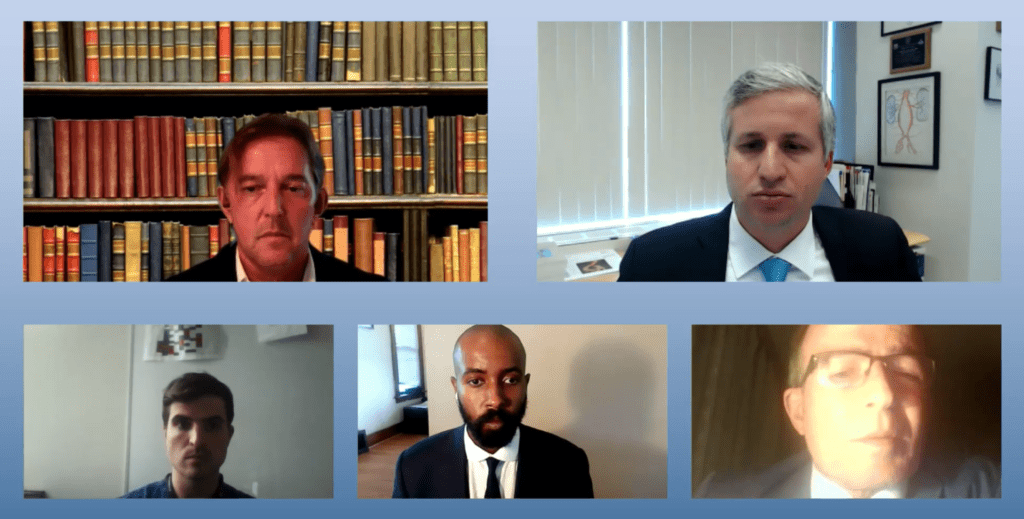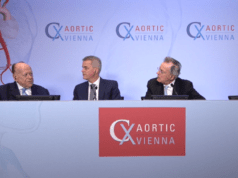
On Friday, CX Aortic Vienna livestreamed two more sessions in its “Best of CX and all abstracts” series, underscoring key research in the aortic space.
These sessions, and all other sessions from day four of CX Aortic Vienna, are available to view on demand. Click here to register and access the first recording, and click here to register and access the second.
Opening the first session, George Titomihelakis (Philadelphia, USA) presented a staged hybrid repair of a type II thoracoabdominal aortic aneurysm (TAAA). Titomihelakis detailed that type II TAAA open repair is associated with significantly higher mortality and morbidity than type III or IV TAAA, with risks including death, stroke, and damage to the spinal cord resulting in paraplegia. He concluded that staged repair followed by interval open distal repair can be a safe alternative, with lower morbidity and mortality than a traditional approach.
Dennis Lui (London, UK) reported on Northwick Park Hospital’s aneurysm-related mortality in abdominal aortic aneurysm (AAA) surveillance. “Unfortunately, surveillance is not perfect,” he told the CX Aortic Vienna audience. “We often end up scanning patients who will not need it, and we also scan patients who rupture unexpectedly,” he detailed, ending the presentation on a positive note: “We look forward to advances in biomarkers, imaging modalities, and better ways of predicting aneurysm risk.”
Jesse Manunga (Minneapolis, USA) discussed the use of inverted limb in conjunction with a fenestrated device for the rescue of failed previous endovascular repairs. “The use of inverted limb in conjunction with fenestrated endovascular aortic aneurysm repair (FEVAR) to treat failed endovascular aneurysm repair (EVAR) with short distance from the renal arteries to flow divider is safe and has good mid-term results,” he informed the CX Aortic Vienna audience, adding that the technique “expands the indication for FEVAR to those with failed EVAR, when manufactured inverted limb is not available”. Following Manunga’s talk, discussion highlighted the time-saving benefit of this surgeon-modified graft.

In the second abstracts session, Barnaby Farquharson (London, UK) spoke on the roles of endovascular aneurysm repair (EVAR) in the management of secondary aortoenteric fistula. He concluded that EVAR is successful in the management of this abnormal connection, adding that careful patient selection and expedient management is key to successful short- and long-term outcomes.
Next to speak was Yunus Ahmed (Ann Arbor, USA), who presented recent findings on endovascular ascending aortic repair in type A aortic dissection. Based on the results of a literature review including studies published until January 2020, he told the CX Aortic Vienna audience: “TEVAR is a feasible treatment option for high-risk patients,” adding that mid-term outcomes are acceptable.
“This review highlights the need for development of disease-specific devices and delivery methods, and hybrid arch and concomitant valve-replacement techniques,” he noted, adding that more long-term data is required before TEVAR may be proposed as an alternative to open repair.”
Finally, Erno Remsey-Semmelweis (London, UK) presented basic science in the vascular field to discuss the role of the impact force of elliptic blood vortex rings collision in acute aortic dissections. “A simplified mathematical formula: vortex collision generated kinetic force divided by current aortic wall resistance allows us to estimate the correct prognosis for an intimal injury only, or for an acute type A or B aortic dissection,” he informed the CX Aortic Vienna online audience.













